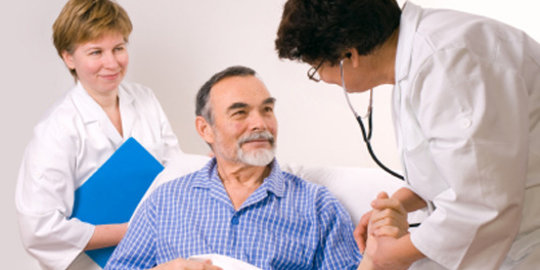stroke illustration. © www.wikinut.com
Merdeka.com – Stroke is a serious medical emergency. About 30% of stroke survivors die within three months. Stroke is also listed as the number one cause of disability and the number three cause of death after heart disease and cancer.
The medical term for stroke is cerebral vascular disease. This occurs when the blood supply to the brain is reduced or obstructed due to certain reasons, which leads to a sudden lack of oxygen levels in the brain cells.
In just a few minutes brain cells can be damaged and lose their function. This brain damage can affect bodily functions that are controlled by the parts of the brain cells that are damaged.
In terms of age, 72% of stroke patients are over 65 years of age, but along with lifestyle changes, stroke can also occur at a younger age. One way to prevent stroke is to avoid risk factors that can cause stroke such as a history of heart disease, high cholesterol, obesity, diabetes, smoking, all of which occur because of our reluctance to adopt a healthy lifestyle.
Find out as much information as possible about stroke, especially the early symptoms that appear so you can immediately recognize it as early as possible. The following early symptoms of stroke what to watch out for, identify the causes and how to overcome them have been summarized by merdeka.com through kemenkes.go.id and ha.org.hk.
Early Stroke Symptoms
If you experience the following signs, consult your doctor immediately because you could be at risk of having a stroke, which are as follows:
- Having trouble speaking
- A sudden and temporary sensation of the eye, such as weakness or paralysis of one arm, leg or half of the face, which generally occurs on the same side.
- Has decreased quality of vision
- Sudden, severe headache
- The body is not balanced, it is easy to fall suddenly
- Fainting frequently
- Incontinence, namely urinating spontaneously
–
Causes of Stroke
Stroke is divided into two main types, depending on the cause, namely:
1. Ischemic Stroke
This type of stroke is often caused by cerebral thrombosis or blood clots that form in the vessels of the brain and is relatively common, more than 70% of strokes are ischemic types. Cerebral atherosclerosis can also lead to the formation of blood clots in the cerebral arteries or blood clots to form in the heart or carotid arteries in the neck.
Blood clots can travel up to the brain vessels distally and block blood flow. Heart disease, including arithmetic (abnormal heartbeats), heart valve problems, and coronary heart disease, can cause strokes.
2. Hemorrhagic stroke
This stroke is caused by a rupture of a blood vessel in the brain. Stroke cases are most often associated with persistent high blood pressure. There are also cases where the blood vessels on the surface of the brain tissue are ruptured.
Stroke cases are associated with congenital cerebral vascular disease, such as cerebral artery aneurysms or arteriovenous malformations. Blood will come out under the arachnoid space (space between brain tissue and skull) and press the brain tissue. Also, the blood vessels constrict after bleeding, which reduces the rate of blood flow.
Both ischemia (inadequate blood flow to parts of the body, caused by blockage of blood vessels) and bleeding can prevent brain tissue from receiving adequate nutrients and oxygen. The affected neurons will die, which can cause a variety of neurological symptoms.
–
How to fix it
- Take precautions by adopting a healthy lifestyle, preventing the incidence of early stroke by identifying risk factors and treating these risk factors.
- Carry out medical treatment to prevent stroke recurrence in patients who have had a stroke / TIA and also continue to treat risk factors that trigger a stroke return.
- Avoid risks by doing physical activity, eating vegetables and fruits, doing regular health checks
- Increase awareness of body health
- Perform routine checks for those of you who have a family history of stroke
–
– .


